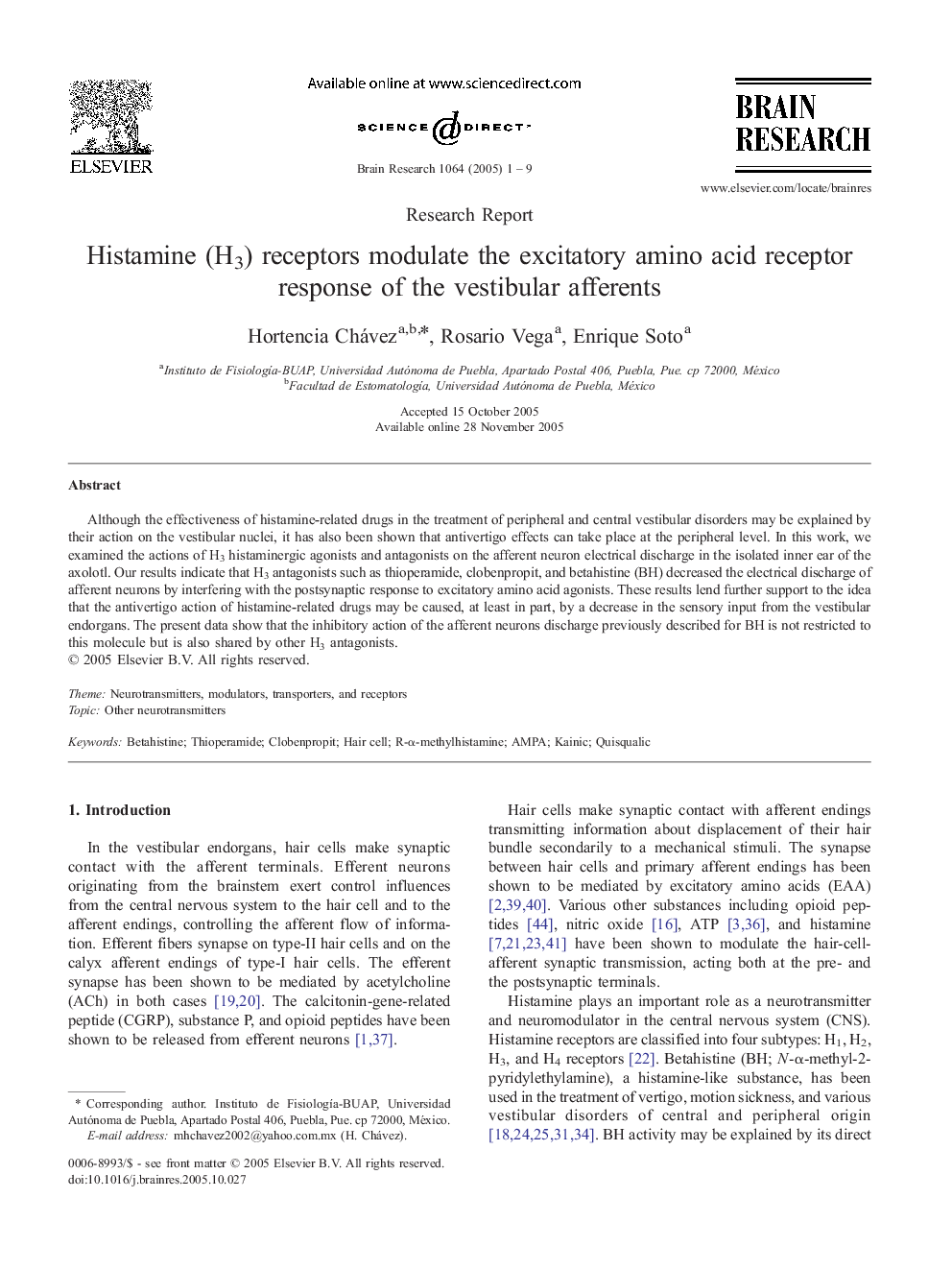| Article ID | Journal | Published Year | Pages | File Type |
|---|---|---|---|---|
| 9415667 | Brain Research | 2005 | 9 Pages |
Abstract
Although the effectiveness of histamine-related drugs in the treatment of peripheral and central vestibular disorders may be explained by their action on the vestibular nuclei, it has also been shown that antivertigo effects can take place at the peripheral level. In this work, we examined the actions of H3 histaminergic agonists and antagonists on the afferent neuron electrical discharge in the isolated inner ear of the axolotl. Our results indicate that H3 antagonists such as thioperamide, clobenpropit, and betahistine (BH) decreased the electrical discharge of afferent neurons by interfering with the postsynaptic response to excitatory amino acid agonists. These results lend further support to the idea that the antivertigo action of histamine-related drugs may be caused, at least in part, by a decrease in the sensory input from the vestibular endorgans. The present data show that the inhibitory action of the afferent neurons discharge previously described for BH is not restricted to this molecule but is also shared by other H3 antagonists.
Keywords
Related Topics
Life Sciences
Neuroscience
Neuroscience (General)
Authors
Hortencia Chávez, Rosario Vega, Enrique Soto,
